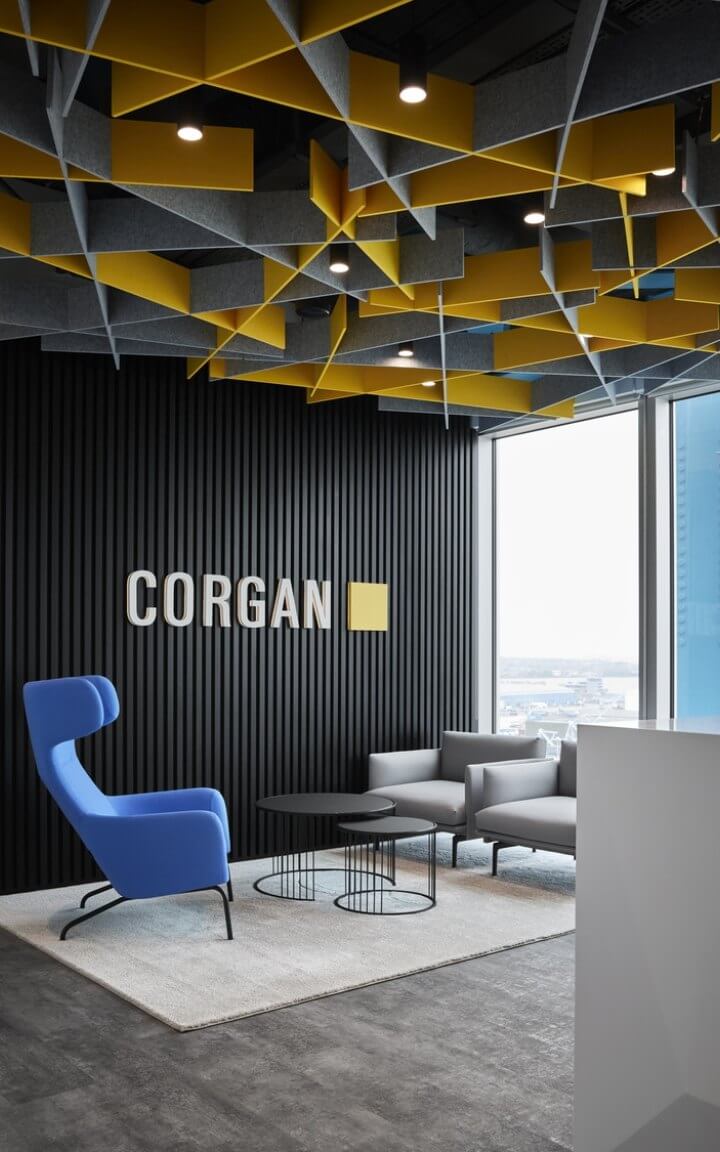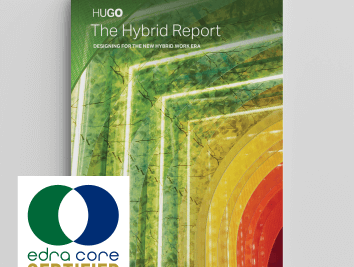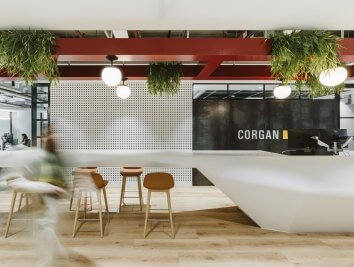Bending without Breaking: Flexibility in Hybridity
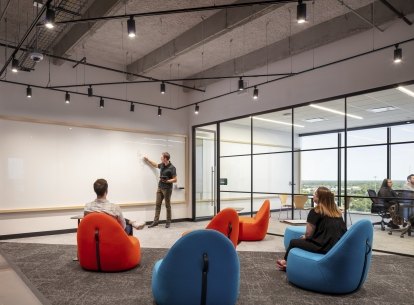
There is a paradox in the reality of a hybrid work environment.
Nearly everyone prefers flexibility in working hours and location – yet structure and predictability are necessary to allow workers to not only feel connected, supported, and productive, but also to feel free to indulge in that flexibility.

The Hybrid Report
The result of interviews Corgan conducted with 45 hybrid leaders and surveys of 1000 hybrid workers across the country, outlines this paradox as well as the challenges of balancing the new flexibility afforded by hybrid work schedules with long-standing workplace basics like productivity, mentorship, accountability, and collaboration.

Boundaries for wellbeing:
While 3 in 4 hybrid workers report that they feel more productive outside of the office and that flexible work policies have improved their wellbeing, 2 in 3 hybrid workers reported that they need established boundaries to be able to “turn off” outside of work. The BBC reported that average working hours increased 30 minutes for remote workers during the pandemic, leading to increased burnout. Additionally, the leaders interviewed in The Hybrid Report shared a distinct change in employees’ use of days off. With flexible work arrangements, the amount of options lead to a reluctance to take mental health days or time off when feeling unwell, resulting in employees working through sickness or neglecting self-care. This situation echoes the phenomenon observed in large tech companies that provide unlimited paid time off — the more freedom granted, the less likely people are to use it.
After about three years of the great corporate experiment and a growing adoption of remote and hybrid work options, research is beginning to show the strain on hybrid employees. According to Gallup’s 2023 State of the Global Workplace report, 55 percent of hybrid workers in the United States and Canada reported feeling stress “a lot of the day,” compared to 52 percent of all workers. Overall, the region experienced a 2 percent increase in reported stress from the previous year. Establishing clear boundaries within which employees are able to enjoy the benefits of flexibility while remaining engaged with their work and connected to their coworkers can help improve productivity.

Predictability for collaboration:
According to the Harvard Business Review, flexibility in the workplace runs on two axes, time and place. When offices and other common pillars in our social and economic lives first experienced forced closures, place – the physical office building – got most of the attention. However, work also shifted to more flexible hours, especially as working parents were suddenly in charge of their children’s school hours. This loose scheduling is great for accommodating unexpected day-to-day life tasks – a dentist appointment, apartment maintenance visit, or a kid’s snow day. But, to collaborate among teams, there needs to be some overlap of time, if not location.
Establishing a structure to synch employees’ in-office or online times facilitates collaboration among teams and can lead to increased motivation cultivated from seeing others work as well. Making these plans in advance, rather than day-of, helps leaders and teams optimize their in-office time. Leaders who rely on day-of coordination expressed difficulties maximizing their collective time and effort. Instituting predictable schedules allows workers to collaborate on a regular basis while still granting them the ability to enjoy the flexibility of hybrid work.
Place matters, too. Employees need to know that when they arrive at a certain time, that there will be somewhere to arrive…and that the place will have what they expect from it. Providing predictable resources including office equipment and technology as well as a mix of space types so employees know they will have access to places that support individual work, room for collaboration, opportunities for focus or respite, and even office environments that support the connection and community we all crave—are fundamental to that other axis we depend on. We won’t—or can’t—be somewhere at a certain time if that place doesn’t work for what we need to accomplish during that time.

Transparency for trust:
Trust in the workplace runs two ways – from individuals to their managers and from managers to their teams. Establishing trust and balance for individuals and teams has been difficult as companies shift from being fully remote to being hybrid or fully in-office. Managers want to trust that their teams are being productive and effective, and employees want to trust that coming into the office isn’t just safe, but worth their commute – how many of us have commuted to the office only to sit in our cubicles for a Zoom meeting? Managers’ anxieties about their team’s productivity are often expressed as micromanagement, negatively impacting the flexibility of remote work. This micromanagement has been exacerbated by the increase in remote and hybrid work: the Harvard Business review related that one third of workers have the sense that they are not being trusted by their supervisors to get their work done, with an even larger portion feeling that they need to be constantly available, even after work hours.
Corgan’s 2021 Workforce Blurred report found that flexibility, motivation, and trust reinforce each other. And, more recently, the survey from The Hybrid Report demonstrated a clear connection between motivation and being around others. Employees reported feeling more motivated when working alongside others. It also provides opportunities for intentional and casual mentorship and professional development. The two reports also underscored that employees feel their accomplishments were more visible—reinforcing the transparency and trust that comes from in-person work.
Transparency about expectations, benchmarks, and schedules can ease managers’ insecurities about productivity, give hybrid workers stronger parameters for times to be available for collaborative work, and set mutual expectations for productivity metrics. However, just setting boundaries is not enough – a plan to clear plan to communicate and maintain these boundaries predicts their success, the Hybrid Report found.
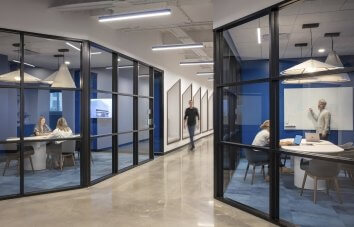
Strategies for success:
Setting parameters for working hours, establishing predictable schedules, and being transparent about expectations are all ways to optimizing the benefits of flexible work policies. For the office, though, policy is just one axis. It needs a design that complements and supports the overall goals and mission of an organization. From predictable office tools and a mix of settings to places that are comfortable, convenient, and functional, the shift in flexibility has applied pressure on how we think of and design the office. And, for those who are willing, invited an opportunity to create spaces that truly support a flexible, collaborative, and balanced workforce.
